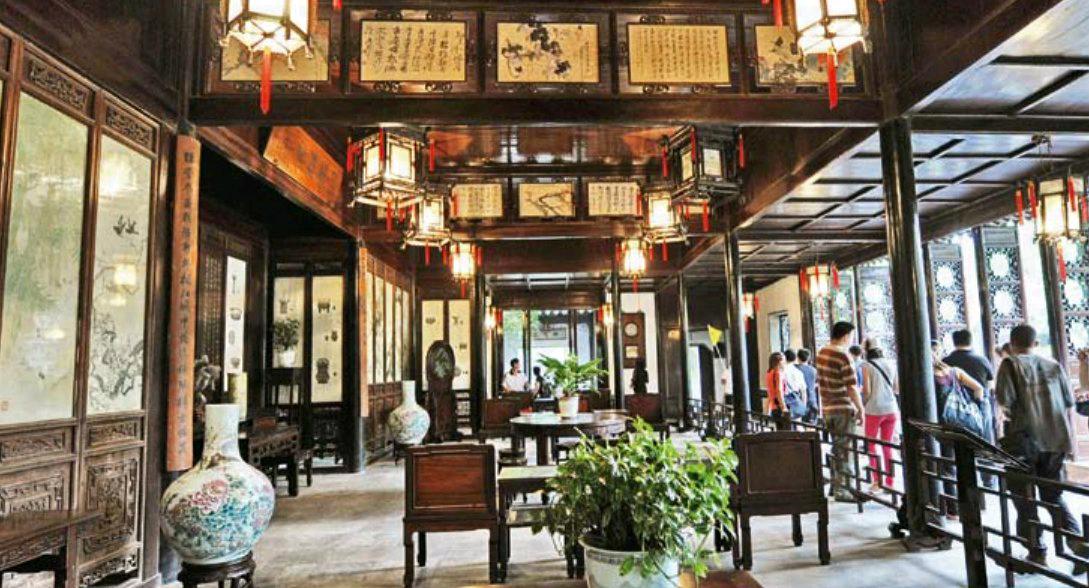Picturesque Suzhou
by+Alexandra+Etienne
Suzhou, located in the south-east- ern province of Jiangsu, is a city famed most of all for its canals and picturesque gardens. Spend more time there and you will actually find several other gems scattered across the city. The Suzhou museum for instance, worth a visit for the architecture in itself, has a great collection of artworks with at least 15,000 pieces that include ancient Chinese paintings, calligraphy, folk crafts, pottery and ceramics. The current building, inaugurated eight years ago, was designed by Chinese-American architect I.M. Pei, now for his innovative aesthetics, as for his signature pyramid at the Louvre.
The construct of this museum in Suzhou corresponds with its surroundings, a modern aspect that is still attuned to the past – wood seamlessly connected to glass materials, small arches, a replica of a Chinese-style park, rocks and water. If Chinese art and history spark your curiosity, then do not hesitate to spend an afternoon there. I personally loved the exhibits on calligraphy and paintings, with masterpieces from the Song dynasty in the 12th century up to the Qing era (1644-1911).
The museum appealed to me in the way the site is seamlessly woven with the urban‘fabric of Suzhou as a whole. There is indeed a sense of continuity between the rooftops, tones and hues one notices across town, and those used for the museum as well.
In the old area on Pingjiang road, you may also experience a slice of ‘old Chinathrough the shops of antiques and silk ware that line the river. In fact, the bridges and surrounding gardens were chosen as UNESCO World Heritage sites, and thus they have been well preserved and kept for you to enjoy. I particularly strolled around the Youyicun garden, with its ‘bucolic like entrance and age-old charm. The place I stayed at was near the Beisi pagoda, which I would walk past occasionally. The sight of it was especially impressive at night, when the whole structure lit up against the pitch-black sky.
Of course, no description of Suzhou would be complete without defining its core feature: silk production. I highly recommend the Suzhou Silk Museum that offers an extensive overview on this exquisite craft that has been around for millennia! The intricacy of fabrics, types of silk and resulting garments are magical to look at. The museums informative displays give you a glimpse at silk-production both as a complex art form and a cultural ‘jewel of China. Definitely a highlight of my sightseeing there!
Now Suzhou has over two million inhabitants, and this ‘Venice of the East certainly has a long-lasting effect on newcomers. My first time there was on a trip from nearby Shanghai (a quick zip on the train). I hope to re-discover Suzhou again in the near future. I find Suzhous atmosphere fascinating: the cobbled streets, colours and shapes, ornaments and the treesshadows, all imbued with a distinctive light that makes it an artful place to wander. No wonder Suzhou has been a fixture on artists minds and eyes for a while now…
According to an ancient Chinese poem:上有天堂,下有苏杭
“In Heaven there is Paradise, on Earth there are Suzhou and Hangzhou”.
China Pictorial2015年4期
